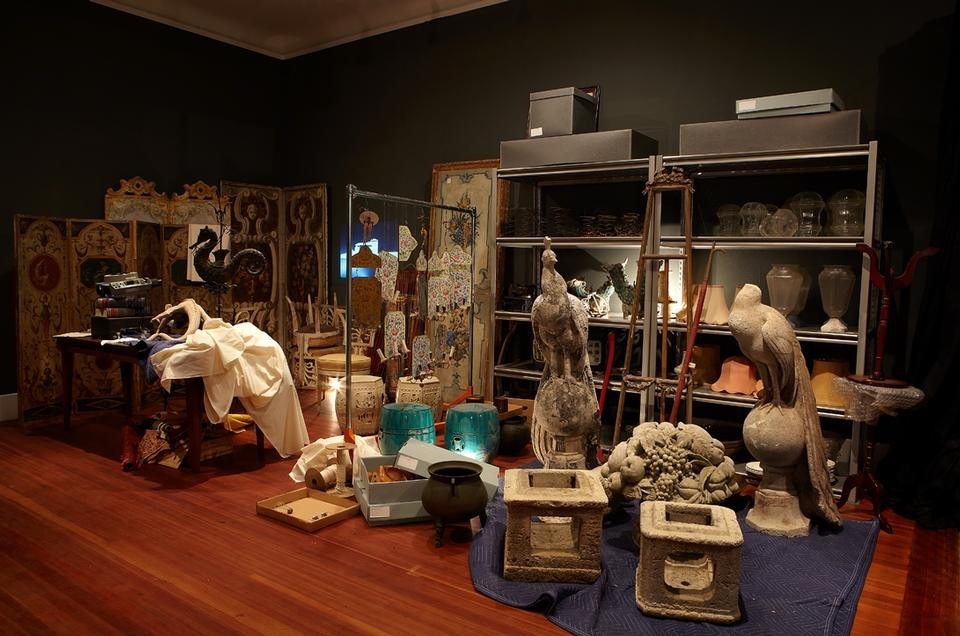From its realization in 1916, The Vizcaya served as the winter residence of its mastermind, American industrialist James Deering, who died in 1925. In his nine years at Vizcaya, Deering filled the property with a large live-in staff, regal and Napoleonic design nods, marble floors, harps, dulcimers, infinite signs of grandeur and, I imagine, more than a few delusions of it. Today, as a National Historic Landmark, The Vizcaya is a tourist attraction and a symbol of both great achievement and great excess — a good stage for a reinterpretation of Macbeth. Just think what must be hiding in those closets. Or, let artist Francesco Simeti save you the trouble.
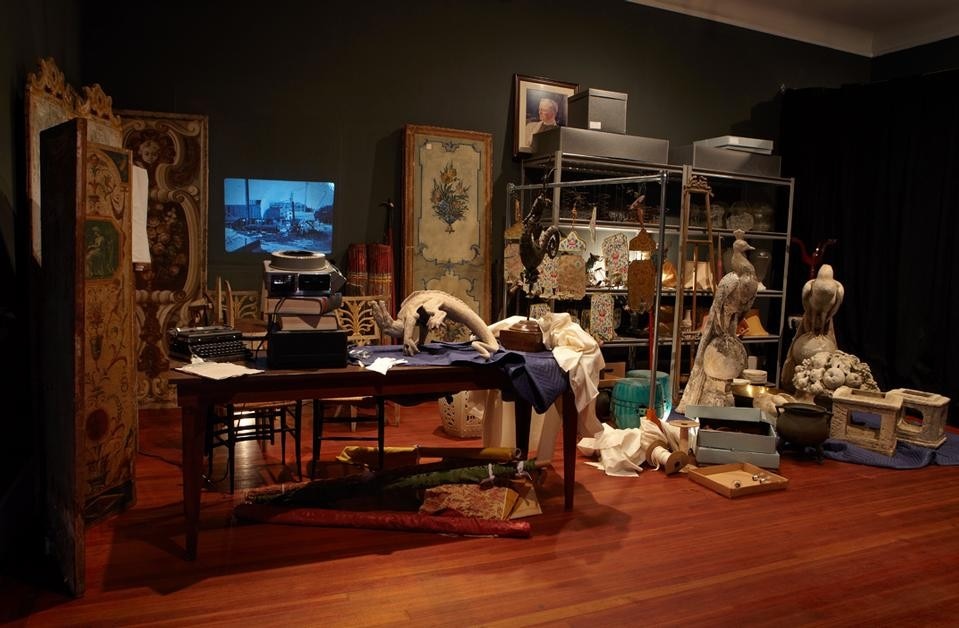
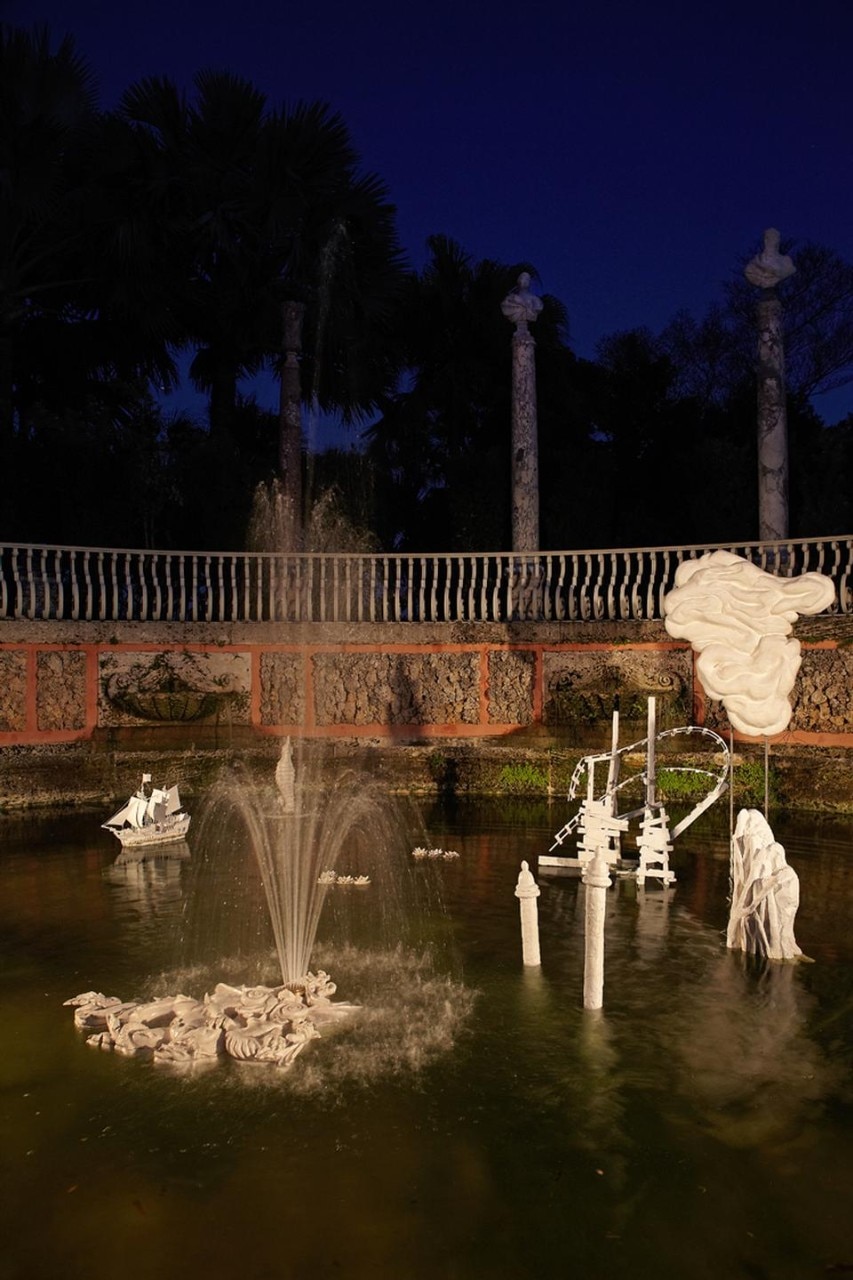
Francesco has recreated the feeling of a storage space, it seems, a deliberately cluttered foil to the immaculate order of its surrounding.
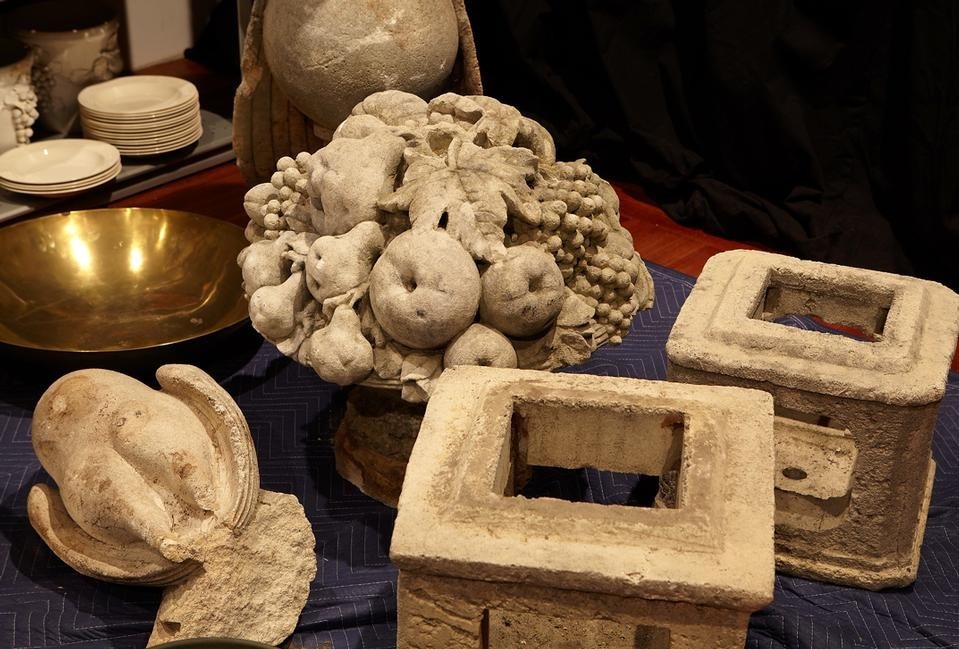
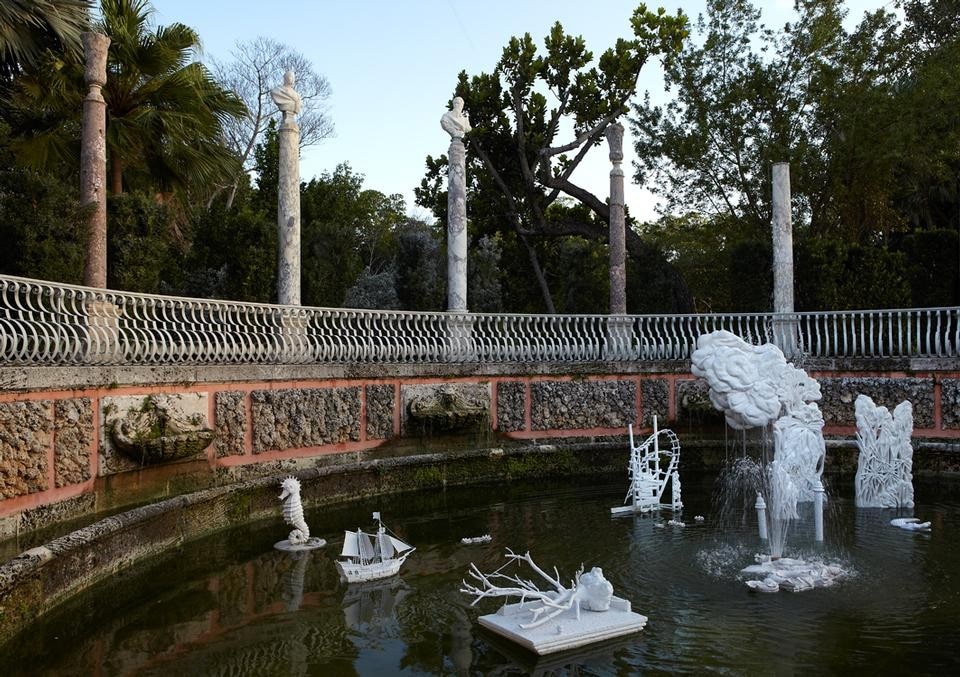
Francesco Simeti: A seahorse, a caravel and large quantities of concrete, stone, fill, topsoil, tiles, piping, trees and other plants.
Vizcaya Museum and Gardens'
3251 South Miami Avenue, Miami


